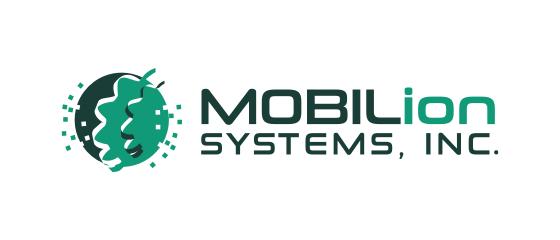Groundbreaking new approach achieves unparalleled throughput while dramatically increasing sensitivity and accuracy for mass spectrometry applications in proteomics and beyond
CHADDS FORD, Pa., Oct. 21, 2024 /PRNewswire/ -- MOBILion Systems, Inc., a leader in separation science innovation, today announced a next-generation approach for complex sample analysis poised to disrupt the mass spectrometry industry as it delivers unparalleled speed, sensitivity, specificity and quantitative accuracy for proteomics, lipidomics and metabolomics workflows. In a comprehensive white paper titled "Abandoning the Quadrupole for Mass Spectrometry Fragmentation Analysis," MOBILion reveals how harnessing the game-changing capabilities of its proprietary structures for lossless ion manipulation (SLIM)-based high-resolution ion mobility (HRIM) technology enables fragmentation analysis at unprecedented speeds, increasing throughput five-fold, detecting low-abundance signals with near 100% ion utilization efficiency, and providing unmatched precision in the identification of complex biomolecules.
"This is a pivotal development for MOBILion that we have been building toward since MOBILion's inception. Replacing slow, inefficient, lossy quadrupole isolation with high-resolution mobility separation provides unmatched speed and peak capacity and represents a paradigm shift in mass spectrometry, one that will redefine the industry for decades to come and open doors to untold scientific discoveries across countless disciplines," said Melissa Sherman, Ph.D., CEO of MOBILion Systems. "Initially targeting the field of proteomics, our new approach aims to deliver faster methods and greater coverage, achieving speed, specificity, and sensitivity without compromise."
Daniel DeBord, Ph.D., Chief Technology Officer at MOBILion and lead author of the white paper said: "For over twenty years, instrument developers have been trying to find a way to overcome the duty cycle and sensitivity limitations imposed by traditional tandem high resolution mass spectrometry (MS/HRMS) approaches, which use a quadrupole filter that can only analyze one or a few analytes at a time and discards the rest. MOBILion's new approach called Parallel Accumulation with Mobility Aligned Fragmentation (PAMAF) removes the inherently slow and inefficient quadrupole from the workflow and replaces it with a HRIM separation, resulting in fragmentation data with ten times higher signal to noise at a speed five times faster than any other incumbent system. I am particularly excited to see the impact this development will have in multiomics applications, where faster and more sensitive MS/MS has shown a clear correlation with the range and number of compounds that can be detected. It has the potential to address some of the biggest challenges in drug discovery and disease research. As we note in the white paper, for personalized medicine approaches, this has the potential to be the difference between a dream and a diagnostic breakthrough by enabling scientists to successfully identify more proteins, lipids, metabolites, and other analytes from complex samples at lower concentrations in a shorter period of time."
Unlike traditional MS/MS that trades the number of target analytes with the sensitivity of analysis, PAMAF enables simultaneous processing of all precursors without sacrificing sensitivity inherent to traditional quadrupole isolation. Additionally, by eliminating the traditional quadrupole filter, PAMAF enables the following over conventional approaches:
Analysis of More Samples in Less Time
Researchers can now accelerate their workflows and dramatically increase throughput for large-scale studies, without compromising data quality. The new methodology outpaces current industry standards by generating fragmentation spectra at speeds up to 1,000 Hz, compared to the 200 Hz offered by current cutting edge HRMS systems, translating to 2-5 times more samples analyzed per day.
Detection of Low-abundance Signals within Complex Samples
Scientists working with challenging matrices like biological fluids can now detect critical low-abundance signals that were previously undetectable. The new approach achieves nearly 100% ion utilization efficiency, providing an order of magnitude improvement in sensitivity over conventional methods, which often capture as little as 0.5% of the available ion signal, providing greater sensitivity for tissue and plasma proteomics in addition to advancing single cell proteomics.
Reduced Ambiguity and Increased Confidence
Researchers studying complex biological molecules such as proteins and metabolites will benefit from reduced ambiguity and increased confidence in their findings, leading to more definitive conclusions in areas like disease biomarker discovery and therapeutic drug development. By delivering superior separation of isobaric and isomeric compounds through HRIM technology, the PAMAF approach ensures precise handling of 'known unknowns' in proteomics, lipidomics, and metabolomics research.
Sherman continued, "Seismic changes in the fundamental operational modes and platforms of mass spectrometry are rare, and we believe the implementation of our unique technology in this operation mode represents the beginning of the next 15 to 20 years of mass spectrometry product development. Fundamentally rethinking how ions are processed, separated, and analyzed, MOBILion's technology promises to deliver unprecedented performance in speed, sensitivity, and specificity. The MOBIE device was just the beginning of demonstrating the power of the platform SLIM technology; this new approach is a step change advance that will have far-reaching implications for proteomics research, potentially enabling new types of experiments and insights that were previously impractical or impossible due to technological limitations."
For more details on these new capabilities and proof-of-concept data, please refer to the white paper titled "Abandoning the Quadrupole for Mass Spectrometry Fragmentation Analysis."
About MOBILion Systems, Inc.
MOBILion Systems is Revealing What Others Leave Unseen®, pioneering next-generation separation science by developing tools that more deeply, accurately, and efficiently characterize complex molecules and samples. MOBILion drives advancement across various industries, from biopharma discovery to food testing and environmental safety and beyond, with instruments that provide greater resolution than incumbent approaches. The company's technology integrates seamlessly with mass spectrometry for workflows that unravel complex analysis. MOBILion is shifting the paradigm of what is possible – and we are just getting started. Learn more at www.mobilionsystems.com.
Media Contact
Jon Yu
SOURCE MOBILion Systems


